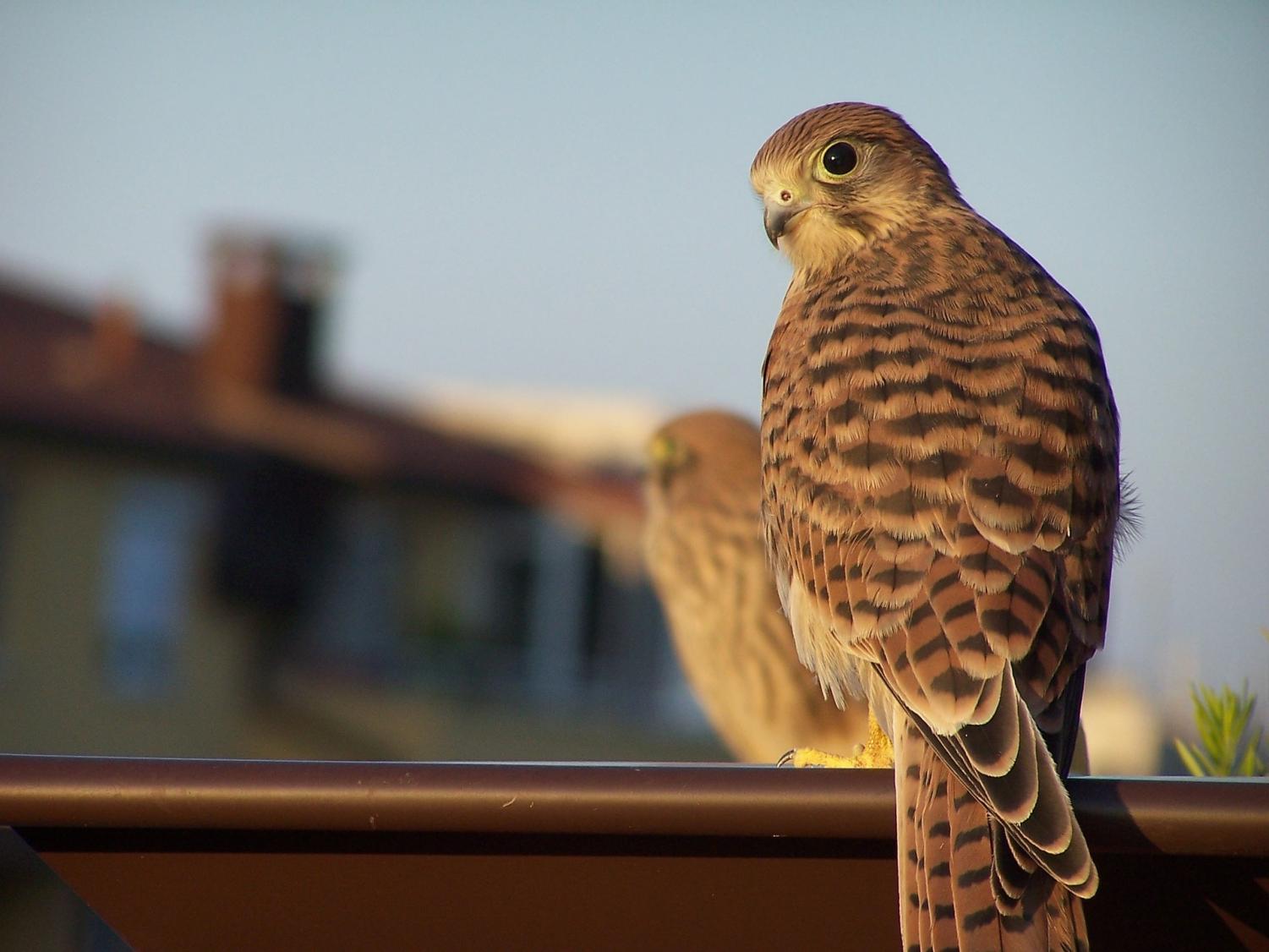SIU engineering students invent new tool for kestrel conservation
April 26, 2023
Two undergraduate engineering students at Southern Illinois University (SIU) created a high-tech birdhouse for conservation groups studying kestrel nesting patterns.
The birdhouse was made as a final project in the capstone design class by Brad Thompson and Melissa Flores; the program allows students to utilize their skills to simulate the design process from initial talks with investors through drafting and construction.
“So as it stands, they have a bunch of these giant kestrel bird boxes set up for these birds of prey that migrate around the area this time of year,” Thompson said. “And in order to band the birds properly, they first have to make sure they’re in the box, and that can be a team effort.”
Advertisement
He said the primary ways of currently checking the boxes are to either bring a team of people who can climb and hold the ladder to reach the height of the box to look inside directly or to bring along a non-collapsible pole with a camera on top to peek inside, requiring a larger vehicle to transport.
“So what our project does is turn that whole mess into a one-person job. All they have to do is open up a small box to look at an LCD display, and that display will tell them whether or not there’s activity in the box or whether it’s occupied,” Thompson said.
He said the project consists of two parts: the sensor, which attaches to the outside of the entrance to the box, and a separate display at the base of the tree. The two communicate with each other through radio signals.
Thompson said one of the issues that needed to be addressed with the prototype during development involved power consumption, as the display would use up the battery power relatively quickly without some sort of intervention.
“That LCD really likes to turn out power and heat of current, but actually the receiver, the one on the bottom with the display, will go to sleep after a very short period of time. That solution came during the programming phase, but it wasn’t on the design sheets or flowcharts or anything,” Thompson said.
Flores said another issue that presented itself was the availability of casings for the sensors. Since they would be placed outside the box, the sensitive electronics would need to be protected from the elements.
“I had more difficulty designing the case for the sensor because there wasn’t really anything out there [we could buy]. So I used SOLIDWORKS and AutoCAD to 3D print the cases,” Flores said.
Advertisement*
She said the type of sensor used needed to be considered as well due to the superior eyesight of the kestrels.
“The kestrels can see ultraviolet light, so we decided to get an infrared sensor so we can sense whether the bird is in or out,” Flores said.
She said the sensor reads whether or not the bird has passed through the entrance and communicates that with the lower screen at the foot of the tree, allowing them to remain undisturbed until the conservation team is able to reach them.
“I give the students a chance to come up with their own ideas,” said Carl Spezia, the course professor. “They give a presentation, sort of like Shark Tank, and engage the other people. Then there’s voting to select the project they want to work on.”
Spezia said the course takes place in two parts, with the first semester including education on predominantly design and professional advice and the second tackling the more hands-on aspects of developing a presentable prototype of the project in question.
“One of the things I try to instill in all my students is how this is a simulation of the outside world. This seems like a simple project, but when you start into something, you can discover there are other things that need to be dealt with,” Spezia said.
Spezia said one of the things he enjoys about engineering is how creative the process can be for coming up with innovative solutions to everyday problems.
“I think what makes [our class] unique is it gives the students a chance to use their technical skills to be kind of creative, because I believe engineering to be a very creative thing,” he said.
Thompson said he went into engineering because he enjoys using his knowledge and education to ask and answer questions.
“I think it’s just the mindset, the concept of working with your hands, of understanding, of learning and asking questions. If you ask enough questions, you get to the point where you have to figure it out and just go to school for it,” he said.
Flores said her relationship with her father, a union electrician in Chicago, helped deepen her love of engineering.
“He would always come home and talk about what he did at work and, because you had to pass exams in order to be in the union, he would do homework and I would watch,” she said. “That sparked my interest and that’s why I chose to come to SIU for Electrical Engineering Technology.”
Both students said they have jobs waiting for them after graduation which, according to Spezia, are well earned.
“These two did fine work on this,” Spezia said. “I’m not going to go on record to say they’re going to get an A yet, but I think they’re doing a good job, you know. And they both deserve to have their jobs waiting for them coming out.”
The Daily Egyptian Editorial Board can be reached at [email protected]. To stay up to date with all your southern Illinois news, follow the Daily Egyptian on Facebook and Twitter.
Advertisement



